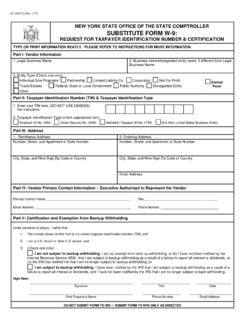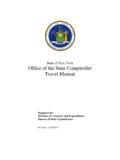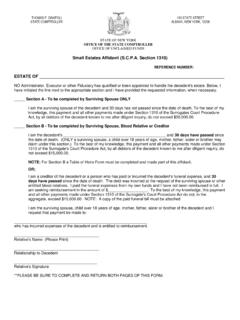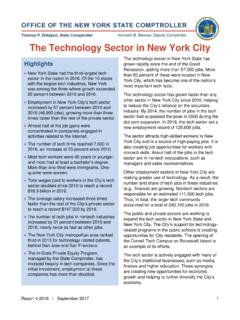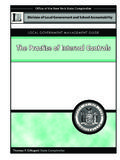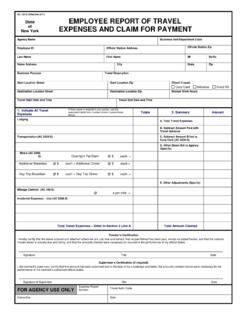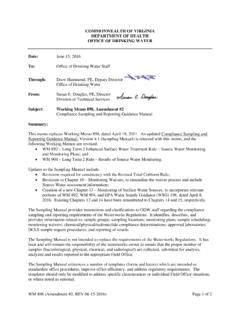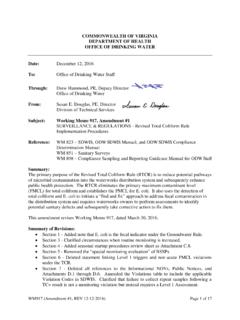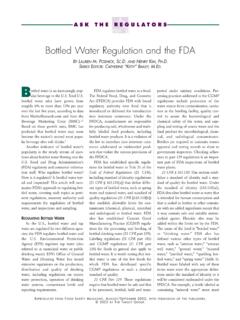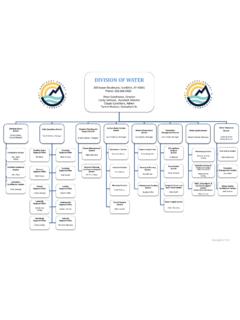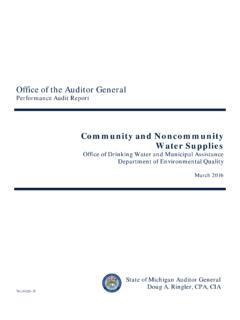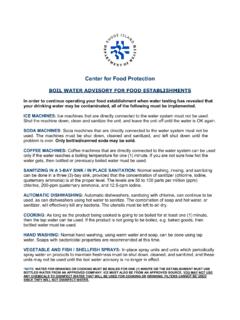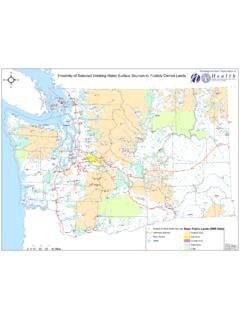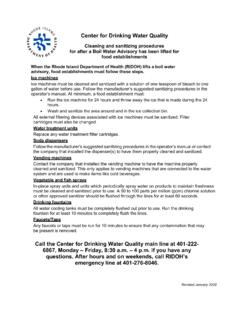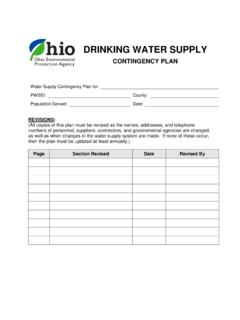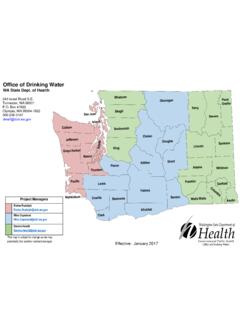Transcription of Office of the NEW YORK STATE COMPTROLLER
1 New york STATE ComptrollerTHOMAS P. DiNAPOLICOMPTROLLERO ffice of the NEW york STATEFEBRUARY 2017 drinking water Systems in New york The Challenges of Aging Infrastructure 939 local governments have water departments or districts, with a total revenue of $ billion (not including New york City). Major municipal water revenues: 79% water fees 15% property taxes Major municipal water expenditures: 49% contractual 33% personal services and benefits 15% debt service 27 public water authorities, with revenues of $ billion (including New york City). Typical monthly water costs for consumers range from $20 to over $100.
2 Estimated 20-year cost of needed water investments: $22 billion (EPA) $39 billion (DOH)New york s Local water Systems by the Numbers1 Industrial Development Agencies drinking water Systems in New york The Challenges of Aging InfrastructureIntroductionNew york STATE has long benefitted from abundant and reliable water resources. Residents expect safe and affordable water for basic daily needs, and industrial, institutional and commercial users depend on the availability of water resources to produce their goods and deliver services. Local governments, water authorities and private water companies serve the important function of delivering water through an extensive but aging infrastructure.
3 The work of upgrading New york s water infrastructure merits sustained attention. Local government officials and the communities they serve are increasingly concerned about the short and long-term outlook for their water systems. As new examples of the vulnerabilities of water systems, from contamination to water main breaks, continue to emerge in New york STATE as well as other areas of the country, the public and private sectors will expect government to offer solutions. Paying for these solutions will present a considerable following report offers an overview of the different ways in which public water supplies are provided, regulated and funded in New york STATE .
4 It also focuses on some of the specific concerns facing local governments including their own funding trends, capital planning practices and the emerging risk areas of contamination and water Systems in New york The Challenges of Aging InfrastructureWater SystemsThe fundamental elements of water systems are their ownership, infrastructure and the governmental framework within which they operate. In sparsely populated areas, there may be no water system at all, other than privately maintained wells or surface- water sources. However, in most urban and suburban areas of the STATE , water is provided by a local government water department or district, a public water authority or a private company.
5 The following discussion focuses on water systems operated by local governments and public InfrastructurePublic water systems vary greatly in size and complexity. The smallest systems for example, those that supply a single business or neighborhood may use groundwater drawn from a well or nearby surface water source (typically a lake, reservoir or river). Larger systems like those that serve suburban towns may also draw from local sources or a regional supplier, and often depend on complex storage and distribution networks. Cities, with their historically dense development, generally import their water from outside their municipal boundaries (often from city-owned sources), both to ensure adequate capacity and to prevent contamination.
6 New york City s water system is by far the largest in the STATE , drawing water from City owned reservoirs as far away as the Catskill Mountains, conveyed through hundreds of miles of tunnels and Development Agencies drinking water Systems in New york The Challenges of Aging InfrastructureWater Distribution Systems1. water originates from a source or sources, generally from a collection point such as a river, lake, reservoir or a well tapping into an aquifer. 2. A treatment plant purifies the water through filtration and/or disinfection, and provides corrosion control if Next, the water is often pumped to an elevated storage tank or pressure tank.
7 4. Finally, water mains and other distribution pipes use gravity or pumps to convey water to users. 5. Most large community public water systems and many small systems include meters to measure water usage for billing and conservation water Supply Distribution SystemSource: US Environmental Protection AgencyFigure 1 Note: Pumps and valves are located at a variety of locations throughout the distribution systemStorage TankTreatment PlantMainSource4 drinking water Systems in New york The Challenges of Aging InfrastructureGovernment FrameworkMany different governmental entities have a role in the ownership, operation and regulation of water services.
8 Local governments (cities, villages, towns and a few counties) operate and fund the majority of water systems that supply significant populations. water authorities, which are separate public corporations established by STATE legislation, also operate some water water systems, often covering a metropolitan area, may be run by either water authorities or counties. Private water companies operations range from small rural systems to large regional Figure 8 for more information on the largest water systems in New york water DepartmentsAs part of their financial reporting to the Office of the New york STATE COMPTROLLER (OSC), most cities and villages report having water departments or divisions carrying out similar functions that serve the entire municipality.
9 Additionally, 9 counties and 40 towns report having entity-wide water departments. In all, 474 local governments and 1 joint activity provide water services to all of their DistrictsCity and village systems generally provide water to the most densely populated areas. The majority of towns do not provide water to all of their residents, but instead provide water to properties in specific areas of the town, known as water This allows towns to serve only population centers that would benefit from a more centralized water system, while in undeveloped or less-developed areas, private well water may be a better solution. Town boards generally establish and administer water districts.
10 The properties in a particular district bear the district s costs, not the taxpayers of the town as a whole. A single town may have multiple water districts, and 484 towns (half of the towns in the STATE ) have at least Counties also may establish and administer water districts, which operate similarly to town 2 Local Government water ProvisionCountyCityTownVillageJoint ActivityTot alTown -Wid e Only water Districts OnlyTown -Wid e and water Districts95420464203711939 Source: Office of the New york STATE COMPTROLLER (OSC). Does not include New york may provide water as a town-wide function, by water district or both. Joint Activity - Northern Westchester County water Works, serving the Towns of Cortlandt, Yorktown and Somers and the Montrose Improvement District.
